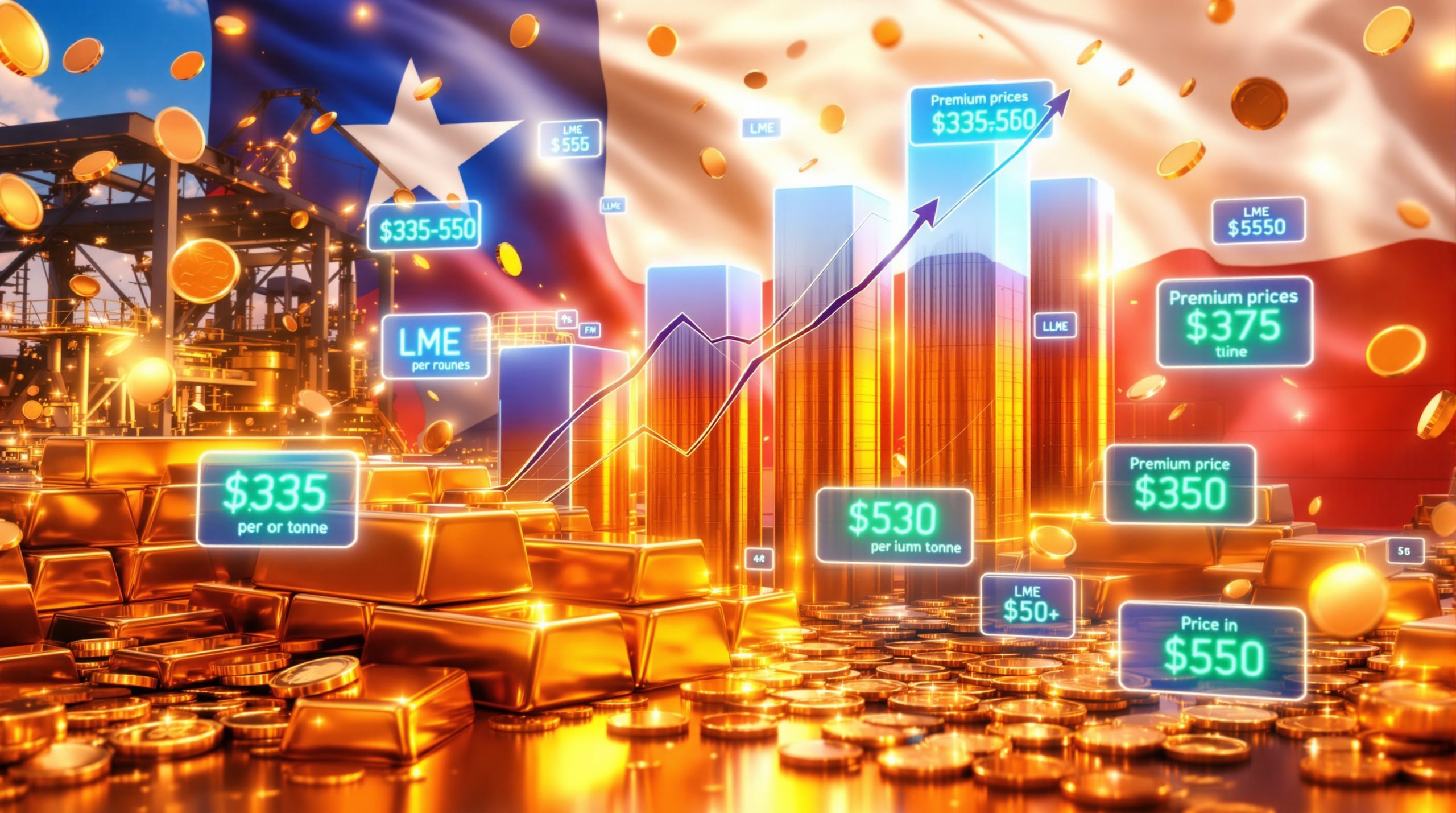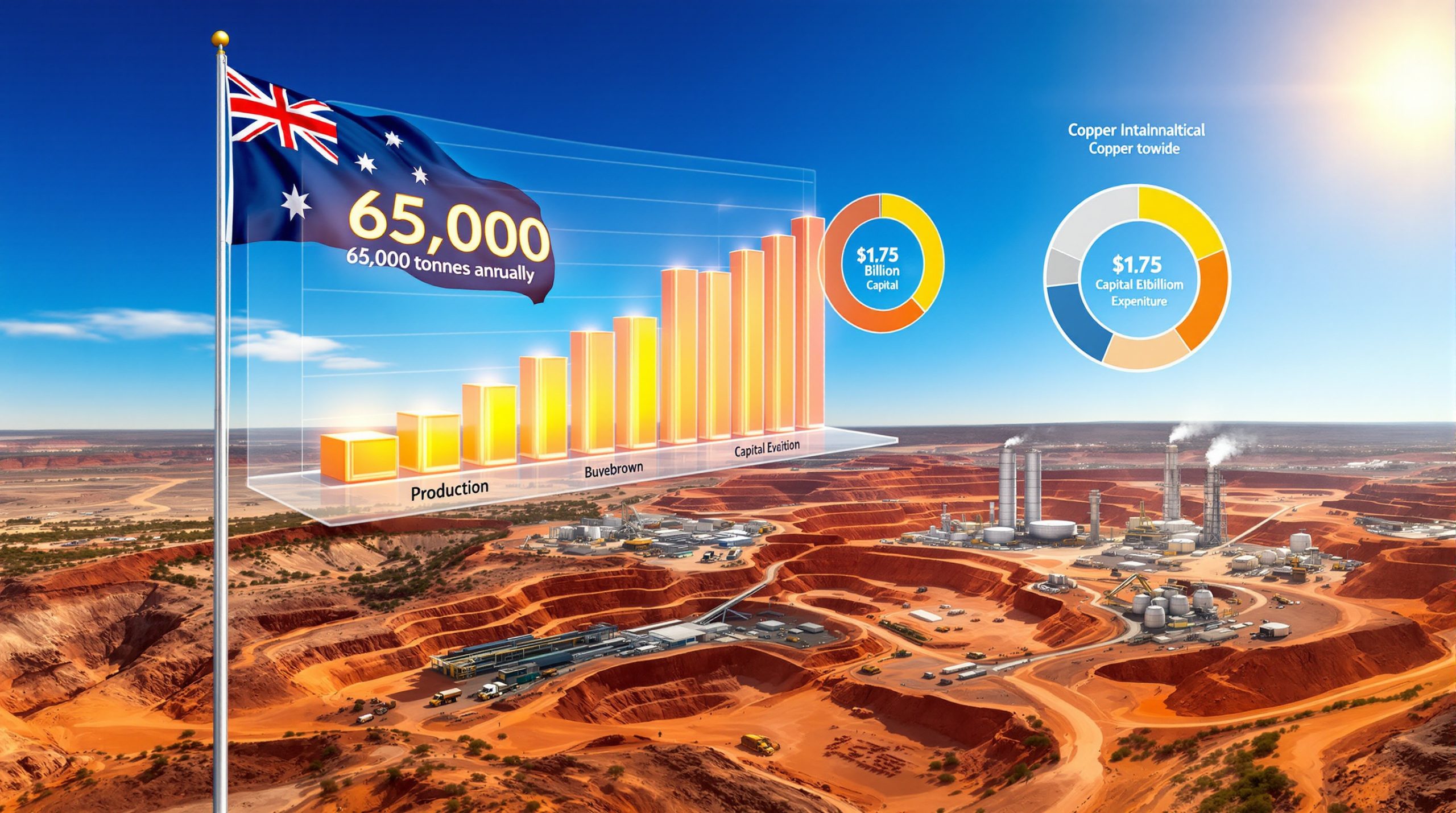Gold Investment Demand: Navigating Global Risks in an Uncertain World
How Are Global Risks Driving Record Gold Prices?
Gold prices have reached unprecedented levels, recently testing the $4,000 per ounce mark in 2025. This remarkable surge reflects a fundamental shift in investor sentiment amid escalating global uncertainties. The precious metal's traditional role as a safe-haven asset has been reinforced by a perfect storm of geopolitical tensions, economic instability, and financial market volatility.
According to data from CPM Group's Market Commentary on October 10, 2025, gold was trading at $3,998 per ounce, having climbed steadily from approximately $270 per ounce in 2000, with significant acceleration beginning in 2019. The record high gold analysis shows this trend continuing throughout 2025.
Key Factors Behind Gold's Price Surge
- Record investment demand across physical gold, ETFs, and futures markets
- Intensifying geopolitical conflicts creating unprecedented uncertainty
- Central bank purchasing at historically elevated levels
- Persistent inflation concerns despite monetary policy adjustments
- Growing global debt burdens threatening financial stability
Market analysis from CPM Group indicates that the current global risk environment is "higher at this point than at any time since December 1941," highlighting the extraordinary nature of today's geopolitical, economic, and social uncertainties.
A particularly noteworthy phenomenon observed in October 2025 is the simultaneous price appreciation across multiple asset classes. Gold, silver, platinum, palladium, aluminum, copper, stocks, bonds, and even the US dollar all rose concurrently during peak price movements. This unusual correlation suggests that unprecedented levels of global liquidity are seeking investment opportunities across all asset classes rather than responding solely to commodity-specific fundamentals.
Why Are Investors Flocking to Gold in 2025?
The current investment landscape is characterized by a heightened perception of risk across multiple domains. Investors are increasingly allocating capital to gold as a portfolio diversifier and wealth preservation tool.
Market analysts point to an extraordinary situation where investors globally are holding larger portions of wealth in cash (including short-term interest-bearing US treasuries by economic definition) than in invested assets. This abundance of uninvested capital represents potential buying power that continues to support precious metals prices.
Investment Demand Metrics
| Investment Category | 2025 YTD Growth | Primary Driver |
|---|---|---|
| Physical Gold (Bars & Coins) | +18.5% | Retail investor hedging |
| Gold ETFs | +12.3% | Institutional allocation |
| Gold Futures | +22.7% | Speculative positioning |
| Central Bank Purchases | +8.2% | Reserve diversification |
The Psychology of Gold Investment
Investor psychology plays a crucial role in gold's current price trajectory. The metal benefits from both fear-driven demand during periods of uncertainty and momentum-based buying as prices establish new records. This self-reinforcing cycle has contributed to gold's exceptional performance in 2025, with gold market surge continuing unabated.
For gold prices to stop rising, according to CPM Group's analysis, the underlying political, economic, financial, and social risks that have driven investment demand would need to diminish significantly. The continuation of current global trends suggests continued investor buying and price appreciation.
Market Insight: The unprecedented volume of global cash reserves seeking safe investment havens has created a situation where multiple asset classes are rising simultaneously, including gold, silver, platinum, stocks, and bonds – indicating a broader liquidity-driven market environment.
What Geopolitical Factors Are Supporting Gold Prices?
The geopolitical landscape in 2025 presents multiple flashpoints that continue to drive investors toward safe-haven assets like gold.
Market analysts point to the changing political dynamics in the United States following the January 2025 transition to the new administration as contributing to increased market uncertainty. This political shift, combined with broader global tensions, has accelerated investment flows into precious metals.
Major Geopolitical Risk Factors
- Intensification of trade protectionism and tariff barriers
- Fragmentation of global supply chains and economic blocs
- Regional conflicts threatening energy and commodity supplies
- Declining international cooperation on economic policy
- Political polarization within major economies
These factors have collectively created what many analysts describe as the most challenging geopolitical environment since the mid-20th century, providing sustained support for gold prices.
CPM Group identifies multiple categories of elevated risk that are driving investor interest in gold:
- Increased domestic and global political hostilities
- Elevated societal-level tensions
- Increased violence on both domestic and global scales
How Are Economic Uncertainties Influencing Gold Investment?
Economic conditions in 2025 present a complex picture that further enhances gold's appeal as a store of value.
The global debt situation continues to deteriorate, with the Institute of International Finance's data showing global debt reached approximately $315 trillion in 2024, representing around 330% of global GDP when including household, government, financial, and non-financial corporate debt. In such an environment, gold as an inflation hedge has gained renewed prominence among investors.
Global Economic Risk Assessment
| Economic Risk Factor | Severity (1-10) | Impact on Gold Demand |
|---|---|---|
| Global Debt Levels | 9.2 | High positive correlation |
| Inflation Persistence | 7.8 | Strong positive driver |
| Growth Slowdown | 6.5 | Moderate positive influence |
| Currency Volatility | 8.3 | Significant positive impact |
| Financial Market Instability | 7.9 | Strong positive correlation |
The Debt Burden Perspective
Rising bond yields have increased debt servicing costs, particularly for emerging market economies with dollar-denominated obligations. This precarious debt situation enhances gold's attractiveness as a non-liability-based asset.
The International Monetary Fund's October 2024 Fiscal Monitor highlighted that public debt alone reached approximately 93% of global GDP in 2023, with projections showing continued elevation. When private sector debt is included, the figures become even more concerning for long-term economic stability.
What Role Are Central Banks Playing in the Gold Market?
Central bank activity has emerged as a critical factor in gold's price trajectory, with institutions continuing to add significant quantities to their reserves.
A nuanced development observed by market analysts involves central banks converting some treasury holdings to cash to help finance government operations during periods of economic weakness, potentially reducing their dollar and treasury holdings. However, private investors holding assets overseas have increased their treasury holdings, more than compensating for reduced government holdings.
Central Bank Purchasing Trends
Central banks globally have maintained elevated gold purchases throughout 2025, reflecting a strategic shift toward reducing dollar dependency and diversifying reserves in an increasingly multipolar economic landscape.
Strategic Motivations
- Reducing exposure to geopolitically vulnerable currencies
- Hedging against inflation and currency devaluation
- Enhancing financial stability during market turbulence
- Building national economic resilience against sanctions
According to data referenced by CPM Group, foreign and international holdings of US federal treasury debt have continued to rise, reaching record levels as of late 2025. This pattern shows growth acceleration after 2000, further acceleration following the 2008-2009 global financial crisis, a plateau period around 2015-2018, and resumed growth continuing to present.
How Has Silver Performed Alongside Gold?
Silver has experienced a parallel surge, establishing new record prices above $48 per ounce. This performance reflects both industrial demand and investment interest.
According to CPM Group's Market Commentary on October 10, 2025, silver was trading at $48.70, having risen sharply from approximately $22 per ounce at the start of 2024. The market broke out of a six-month sideways trading range in May 2025 and has continued appreciating since.
Silver Market Dynamics
- On October 9, 2025, the December COMEX silver futures reached a new record intraday high of $49.9612, surpassing the previous record of $49.82 from April 25, 2011
- On October 8, 2025, the December contract settled at $48.9904, establishing a new record settlement price, exceeding the previous high of $48.70 from January 1980
- Strong correlation with gold's safe-haven demand
- Additional support from industrial applications in green technology
- Significant investment flows into silver ETFs and physical holdings
Silver Inventory Realities
Despite market narratives about critically low silver inventories, the data presents a more nuanced picture:
- London silver inventories increased from approximately 711 million ounces in March 2025 to approximately 790 million ounces by the end of September 2025, representing an increase of approximately 79 million ounces
- COMEX registered depositories hold approximately 500 million ounces, up substantially from around 100 million in 2011
- Physical metal flows respond to arbitrage opportunities between markets, with significant silver moving from London to New York when arbitrage opportunities existed (2020 and early 2024-2025)
- The fact that London prices are not sufficiently higher than New York to trigger reverse arbitrage (silver flowing back to London) indicates that market participants do not view lower unallocated inventories as critically tight
As CPM Group points out, derivatives trading does not require physical delivery for most participants. The COMEX historically operated with approximately 100 million ounces while supporting much higher trading volumes and open interest, as futures are derivatives instruments where most participants do not take physical delivery.
What About Platinum Group Metals in the Current Environment?
Platinum and palladium have also experienced substantial price increases in 2025, though with different underlying dynamics than gold and silver.
According to CPM Group's Market Commentary on October 10, 2025, platinum was trading at $1,657 per ounce, while palladium was at $1,500 per ounce. Both metals had reached even higher levels earlier that week.
PGM Price Performance
| Metal | 2025 YTD Price Change | Key Driver |
|---|---|---|
| Platinum | +42.3% | Investment demand & South African supply concerns |
| Palladium | +28.7% | Investment flows & Russian supply uncertainty |
| Rhodium | +15.2% | Industrial demand only (no futures market) |
The differential performance between these metals highlights the importance of investment flows versus purely industrial fundamentals in the current market environment.
CPM Group's analysis identifies a critical insight: while rhodium prices have risen, they significantly lag behind platinum and palladium increases. Since rhodium has no futures market (only spot/physical trading), its price movement is driven solely by industrial demand. The divergence indicates that platinum and palladium gains are primarily futures market-driven rather than fundamental demand-driven.
If the price increases were driven primarily by fundamental automotive demand for autocatalyst applications, all three PGMs (platinum, palladium, and rhodium) would show similar percentage gains. This technical distinction provides valuable perspective on what's truly driving different segments of the precious metals market.
How Should Investors Approach Gold in Their Portfolios?
Developing an effective precious metals investment strategy requires understanding the various available vehicles and their distinct characteristics.
Gold Investment Options Comparison
| Investment Vehicle | Liquidity | Storage Requirements | Counterparty Risk | Price Exposure |
|---|---|---|---|---|
| Physical Gold | Moderate | Yes | Minimal | Direct |
| Gold ETFs | High | No | Moderate | Direct |
| Gold Mining Stocks | High | No | Significant | Leveraged |
| Gold Futures | High | No | Moderate | Leveraged |
Portfolio Allocation Considerations
- Traditional portfolio allocation recommendations suggest 5-15% in precious metals
- Current elevated risk environment may warrant higher allocations for some investors
- Dollar-cost averaging can help manage entry point risk at record price levels
- Diversification across multiple precious metals may provide more balanced exposure
Market experts emphasize the importance of developing precious metals investment strategies that are effective, efficient, and realistic for individual circumstances. With gold prices at record levels, careful consideration of entry points, allocation size, and investment vehicles becomes even more critical. Many investors are now looking at strategic gold investment approaches to navigate the current market.
What Are the Key Price Levels and Technical Factors to Watch?
Technical analysis provides important context for understanding gold's price trajectory and potential future movements.
According to CPM Group's Market Commentary on October 10, 2025, gold tested above $4,000 per ounce during that week, trading at $3,998 at 12:20 PM EST on October 10, 2025. The price experienced a decline on October 9 but recovered the following day.
Critical Price Levels
- $4,000/oz: Psychologically significant resistance level
- $3,850/oz: Recent consolidation support zone
- $3,500/oz: Major technical support level established in Q2 2025
Technical Indicators
Recent price action shows gold in an extended bullish trend with occasional short-term pullbacks. Trading volumes have increased significantly during price advances, indicating strong conviction among buyers. Momentum indicators suggest the market remains overbought but can sustain these conditions during periods of crisis-driven demand.
Price movement patterns identified by CPM Group show that gold rose from January into April 2025, moved sideways from April through August 2025, and resumed its rise in late August 2025, continuing through October.
What Could Trigger a Gold Price Correction?
While the fundamental outlook remains supportive, several factors could potentially trigger short-term corrections in gold prices.
Potential Correction Catalysts
- Significant de-escalation of major geopolitical tensions
- Unexpectedly hawkish central bank policy shifts
- Rapid resolution of trade disputes and tariff reductions
- Technical selling after extended price rallies
- Profit-taking by institutional investors
However, analysts generally expect any corrections to be relatively shallow given the strong underlying investment demand and persistent global risks. According to research from ABC News, the current gold rally may actually be signaling deeper economic concerns that could sustain prices.
CPM Group's analysis suggests that potential short-term pullbacks may occur, but are expected to be relatively shallow due to continued strong investor demand for gold. The key factor determining whether prices stop rising or correct is whether the underlying political, economic, financial, and social risks and uncertainties that have driven investment demand are reduced.
What's the Long-Term Outlook for Gold?
The long-term outlook for gold remains constructive based on structural factors in the global economy and financial system.
Long-Term Supporting Factors
- Persistent global debt challenges unlikely to be resolved quickly
- Ongoing central bank diversification away from traditional reserve currencies
- Structural inflation pressures from deglobalization and supply chain restructuring
- Continued geopolitical fragmentation and great power competition
- Growing wealth in emerging economies with cultural affinity for gold
CPM Group's primary outlook on both short-term and long-term basis is for continued price appreciation, based on the expectation that the trends driving prices higher (ongoing since 2019, and fundamentally since 2000) will continue rather than reverse.
Price Projections
Leading financial institutions have revised their long-term gold price forecasts upward, with consensus estimates suggesting gold could average $3,675/oz through late 2025, with potential to reach $4,200/oz by mid-2026 under bullish scenarios. The World Bank's analysis on how gold shines amid uncertainty provides additional context for these projections.
At the time of CPM Group's October 10, 2025 Market Commentary, they were completing their third quarter long-term economic projections, including gold and silver projections under three different scenarios, covering long-term supply, demand, and price outlook.
FAQs About Gold Investment in Today's Environment
How does inflation affect gold prices?
Gold has historically served as an inflation hedge, typically performing well when inflation erodes the purchasing power of fiat currencies. In the current environment, persistent inflation despite monetary tightening has enhanced gold's appeal as a store of value.
Why do central banks continue to buy gold?
Central banks purchase gold to diversify reserves, reduce dependency on the U.S. dollar, hedge against currency volatility, and enhance financial stability during periods of economic uncertainty. The trend reflects a strategic shift in the international monetary system toward greater multipolarity.
Is gold currently in a bubble?
While gold prices have risen substantially, the increase appears supported by fundamental factors including investment demand, central bank purchasing, and legitimate risk hedging rather than purely speculative activity. The price rise correlates closely with escalating global risks rather than showing classic bubble characteristics.
How does gold perform during economic recessions?
Gold has historically performed well during recessions, particularly when accompanied by financial system stress or currency instability. However, performance can vary based on monetary policy responses and the specific nature of economic contractions. During times of gold investment uncertainty, many investors increase their allocations to the precious metal.
What's the relationship between gold and interest rates?
Gold typically exhibits an inverse relationship with real interest rates (nominal rates minus inflation). When real rates are low or negative, the opportunity cost of holding non-yielding assets like gold decreases, enhancing its attractiveness to investors.
Further Exploration
Readers interested in learning more about gold investment trends and market analysis can also explore related educational content, such as CPM Group's YouTube channel, which offers regular market updates and precious metals insights.
Ready to Spot the Next Major Mineral Discovery?
Discovery Alert's proprietary Discovery IQ model instantly identifies significant ASX mineral discoveries, providing real-time alerts that give investors a crucial market advantage. Explore why major mineral discoveries can lead to exceptional returns by visiting Discovery Alert's dedicated discoveries page and position yourself ahead of the market.




